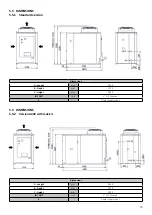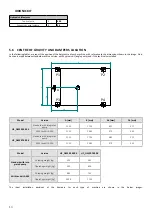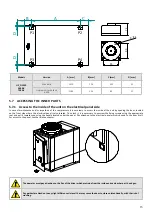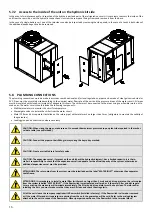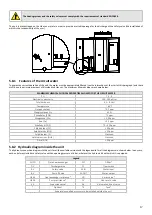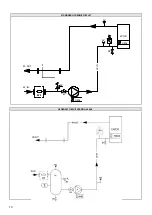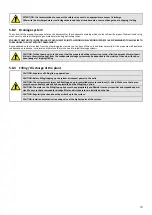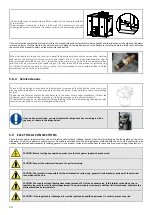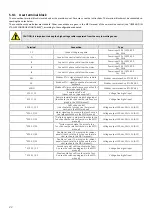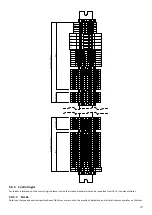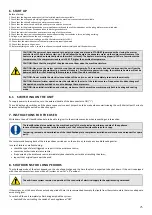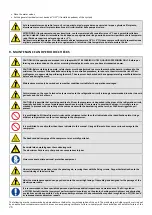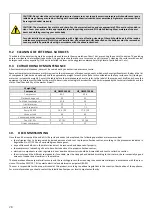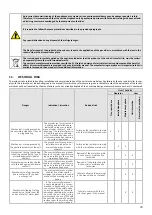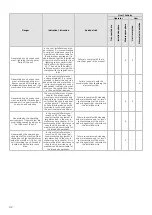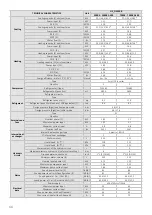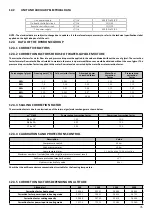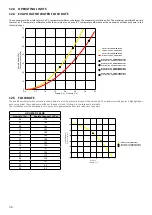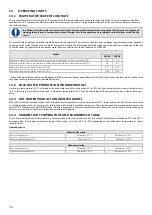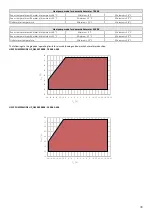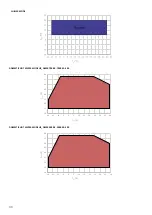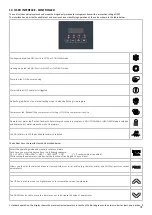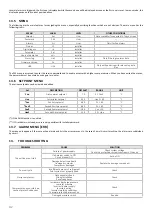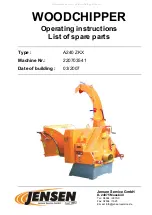
27
warranty and could considerably shorten the service life of your product.
OPERATION
M / R
Filling the water circuit.
R
Presence of bubbles in the water circuit.
R
Check the proper working of the safety and control devices.
M
Check that there are no oil leaks from the compressor.
R
Check if there is a possible water leakage from the water circuit.
R
Check that the flow switch works properly.
M
Check that the crankcase heaters are powered and running.
R
Clean the metal filters of the water circuit.
M
Clean the finned coil with compressed air or water jet.
R
Check that the electric terminals both inside the electric panel and in the terminal blocks of the compressor are
well tightened.
M
Tightening of plumbing connections.
R
Check fixing and balancing of the fans.
R
Clean the air filters in the electrical panel or replace them if necessary.(when present).
M
Correct electrical voltage and phase imbalance (without load and under load).
R
Correct absorption.
R
Check the refrigerant charge and eventual refrigerant leaks.
M
Check the operating pressure, superheating and sub-cooling.
R
Circulation pump efficiency.
R
If the unit is to be out of service for a long period, drain the water from the pipes and the heat exchanger. This
operation is indispensable if, during the shutdown period, ambient temperatures are expected to be below the
freezing point of the fluid used.
M
Check the presence of corrosion/ossidation.
R
Check panel fastening.
R
Check the water quality (see chapter Characteristics of the system water) and the possible concentration of glycol.
M
Check the pressure drop of any filter driers on the liquid line.
R
Check the hydronic side safety valve in accordance with EN 806-5.
R
9.1
GENERALITY
To correctly clean the coil, follow the instructions below:
•
Remove any superficial filth. Debris such as leaves, fibres etc. must be removed without a vacuum cleaner (use a brush or another soft tool
carefully avoiding scratching with metal or abrasive parts). If you use compressed air, pay attention to keep the air flow perpendicular to the
surface of the coil in order not to bend the aluminium fins. Pay attention not to bend the fins with the nozzle of the compressed air lance.
•
Rinse. Rinse with water. It is possible to use chemical substances (specific detergents for finned coils). Rinse the coils by letting the water run
inside each individual passage of the fins, until they are perfectly clean. Pay attention to direct the water jet perpendicular to the surface
of the coil in order not to bend the aluminium fins. Do not strike the coil with the water hose. Apply your thumb at the end of the hose to
increase the pressure of the water jet instead of using specific nozzles which could damage the coil.
9.1.1 Cleaning the filled coil treated with the anti-corrosion method
The anti-corrosion treatment applied to the finned coils (available as an alternative to the standard coils) guarantees protection against aggres-
sive atmospheres.
The frequency of cleaning depends on the environmental conditions and is left to the common sense of the maintenance staff. When oxidizing
dust or grease particles are observed on the battery surface, cleaning is recommended. In general, in a slightly polluted atmosphere, it is recom-
mended to carry out the cleaning treatment every three months.
Washing should be carried out with preferably hot water (40-60 °C) and detergent with neutral pH, while rinsing is carried out with abundant
fresh water (50 l / m2).
If the maintenance staff observes a lack of protective cover on the edge of the fins, it is necessary to contact the nearest service center to pro-
ceed with a new application of the cover and completely restore the protection against corrosion.

